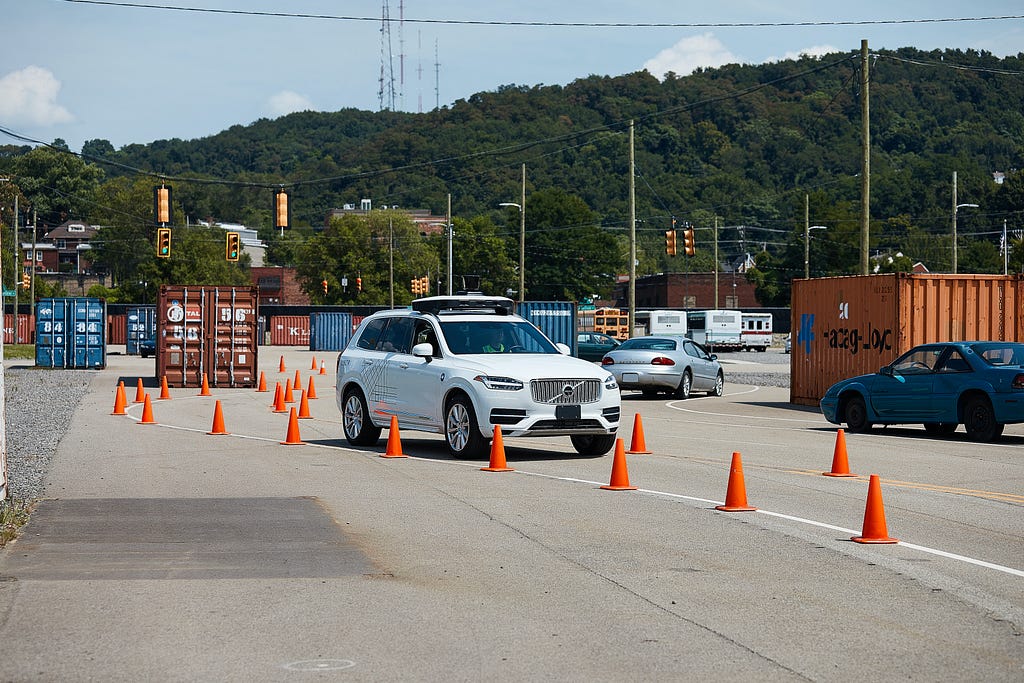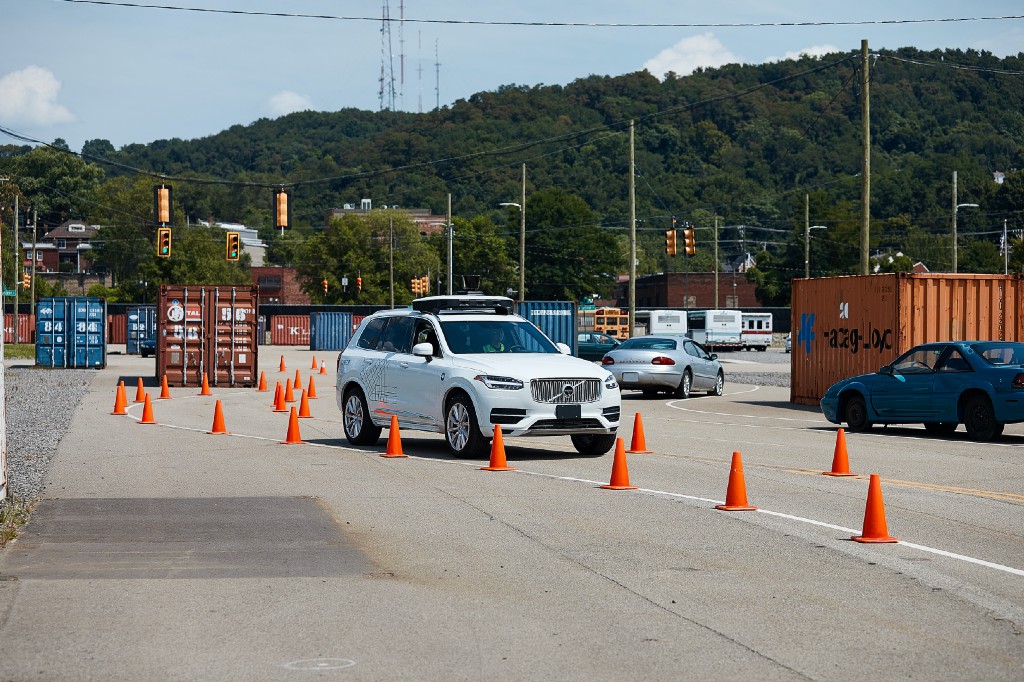By: Uber ATG Safety Team

As Uber ATG’s self-driving technology continues to mature, so too does our approach to self-driving safety. We’re taking another step forward in our commitment to an open public safety dialogue with the release of our 2020 Safety Report. This second installment of our report builds on our principled approach to safety, and provides an evolved view of our status while introducing a number of important enhancements.
Our Safety Report is intended to speak to a number of audiences, including: future users of self-driving vehicle (SDV) technology; those interested in how Uber ATG is working to promote safety throughout the development process; policymakers, including legislators, regulators, and local officials seeking to understand our organization or the current state of the technology; and other developers who may be interested in identifying opportunities to collaborate.
Why we’ve updated our Safety Report
Our 2020 Safety Report discusses Uber ATG’s current approach and progress in the development and operation of safe SDV technology and the opportunities we see for possible improvement in the future. Important additions to our safety approach are incorporated, such as the release of our public Safety Case Framework, the adoption and implementation of a Safety Management System within our organization, and the establishment of our independent Safety and Responsibility Advisory Board. Further, this edition puts a finer point on each of our five Safety Principles and how they are embodied in our work.
The U.S. Department of Transportation (USDOT) and its National Highway Traffic Safety Administration (NHTSA) introduced the concept of a Voluntary Safety Self-Assessment (VSSA) with the release of its regulatory guidance Automated Driving Systems 2.0: A Vision for Safety. Uber ATG released its first voluntary safety report, A Principled Approach to Safety, shortly thereafter as an act of transparency to our stakeholders. This concept of voluntary safety self-reporting has since been maintained through subsequent guidance including USDOT’s Preparing for the Future of Transportation: Automated Vehicles 3.0 and Ensuring American Leadership in Automated Vehicle Technologies: Automated Vehicles 4.0.
NHTSA’s Voluntary Guidance outlines twelve ADS Safety Elements — which collectively identify various safety goals relevant to automated driving systems and offer approaches for achieving them. In our first voluntary safety report, released in 2018, Uber ATG chose to address these ADS Safety Elements through our internally-developed Safety Principles: Proficient; Fail-Safe; Continuously Improving; Resilient; and Trustworthy. Our Safety Principles encompass all ADS Safety Elements; each Safety Element is addressed by at least one, if not each, Uber ATG Safety Principle.
Release of the Uber ATG Safety Case Framework
Uber ATG’s five Safety Principles are the foundation for our approach to SDV safety — spanning vehicle through enterprise levels. We believe that for a self-driving vehicle to be acceptably safe to operate, it must be shown to be Proficient, Fail-Safe, Continuously Improving, Resilient, and Trustworthy. These principles represent our view on the set of necessary high-level criteria governing our safety-conscious development and deployment of self-driving technology. Fulfilling them requires both rigorous system development and thorough organizational processes.
In 2019, we codified these principles and our safety approach in Uber ATG’s Safety Case Framework and released it to the public domain — a standardized framework for achieving acceptable levels of safety for SDV operations on public roads and responsibly developing and deploying SDVs within a self-driving enterprise.
In our Safety Report, we organize discussion of our technology, processes, and operations around our five Safety Principles in much the same way as we organize the claims and supporting evidence of our individual safety cases. This approach underpins the policies, processes, and philosophies that define the way we currently performs our work and builds confidence in the safety of our systems and operations.
Increased Focus on Organizational Safety
The 2020 Safety Report also places an increased focus on Uber ATG’s progress in organizational safety — central to which is our instantiation of an enterprise Organizational Approach to Safety Management and the launch of Uber ATG’s Safety Management System (SMS).
Uber ATG is committed to a formal and systematic approach to managing safety. A robust organizational approach to safety management, generally based on the ICAO Safety Management principles and generally referred to as Safety Management System, works to build and reinforce a culture of safety, which in turn helps to continuously improve an organization’s safety performance. It does so by proactively managing safety risk while providing safety assurance oversight of the organization’s many programs and processes. This approach requires planning, organization, communication strategies, key metrics, and direction of the entire organization.
By focusing on four key components — a detailed Safety Risk Management structure, a robust Safety Assurance program, disciplined documentation of its Safety Policy, and Safety Promotions and Education — Uber ATG’s organizational safety management approach influences our engineering decisions and promotes a positive Safety Culture supported by the organization’s leadership, core values, and employee engagement. Each component plays an important role in cultivating a strong and effective organization-wide safety program and is necessary to enable a high functioning organization. The SDV technology industry lends itself to benefitting from this organizational safety approach when met with the challenges of developing a rapidly-evolving technology in a complex and varied environment.
Since releasing our first safety report, Uber ATG has architected and enhanced many components within its organizational safety management structure, beginning with the foundation of a clearly defined and documented Safety Policy to include specific accountability and commitment to safety throughout the organization. Uber ATG stood up a Safety Review Board and defined an open and just culture with various voluntary and confidential tools for reporting safety concerns and issues without fear of reprisal. Borrowing from established examples in other industries, Uber ATG has defined a Safety Risk Management process that captures organizational change, analyzes the risk with that change and presents the risk to organizational leadership to determine if it is tolerable. Through our Safety Case Framework, we have developed a safety assurance and oversight program designed to be effective at proactively and reactively identifying safety risk and the effectiveness of existing safety risk controls. Finally, Uber ATG has built a robust Safety Promotions and Education program that is continually communicating to and educating the organization.
We believe that tailoring and systematically applying the four key components of Uber ATG’s organizational safety approach are critical for the acceptably safe and responsible development, and eventual full-scale operation, of SDVs. Discussion of Uber ATG’s organizational safety management approach is found throughout the 2020 Safety Report.
External Engagements and Uber ATG’s Safety and Responsibility Advisory Board
Uber ATG’s external engagements and independent advisory activities have evolved significantly since the release of its first safety report. Chief among these are contribution to the Automated Vehicles Safety Consortium convened by SAE, participation in the Underwriters Laboratory industry effort to create a standard for safety argument (UL4600), and establishment of our self-driving Safety and Responsibility Advisory (SARA) Board.
In 2019, Uber ATG established the SARA Board to provide objective reviews of and input to varied aspects of our self-driving program. This external safety advisory board consists of independent, recognized experts in a variety of relevant fields — drawing from aviation safety, insurance, emergency/trauma medicine, automotive safety, and academia. The board meets quarterly to review and recommend improvements to the way Uber ATG develops self-driving technology and brings fully self-driving vehicles to market. Relevant areas of consideration include: organizational goals and priorities; internal policies and procedures; potential risks and remediation; ways to increase public understanding and trust in self-driving vehicles; industry engagement and responsibilities.
Looking Forward
Our 2020 Safety Report provides a holistic look into the overall progress of our organization, technology, and operations — along with the path we see ahead. Delivering on our commitment to update the public along that path sits at the core of Uber ATG’s belief in transparency in self-driving safety, and we look forward to a continued dialogue with our readers, our stakeholders, and our partners through this update and future editions of our Safety Report.
